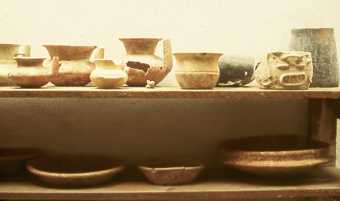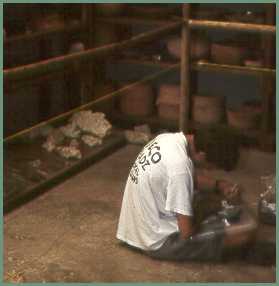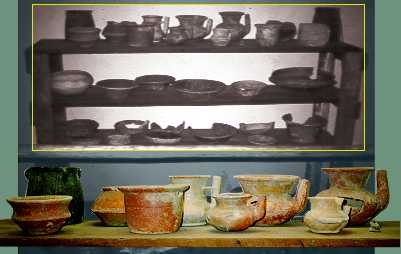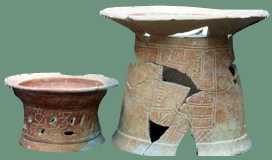
|
Preclassic vessels
in the on-site museum. The spouted vessels on the upper shelf
are called chocolate pots. The lower shelf displays a variety
of bowls. Note the vessel on the top shelf, right, with "bared
teeth!" It is from a burial, and it has a stylized crocodile
headdress near the rim. |

|
Conall Pendergast
labelling the bags we used to store fragmentary vessels to be
reconstructed at a later date. |
|
|
If you travel to Lamanai in
the near future and visit the on-site museum, you will now find
the pottery displayed according to the period in which it was
made. As you enter the museum, you will find the pottery from
the Preclassic Period, about 600 B.C. to A.D.1, arranged on the
shelves to the left.
The next set of shelves houses
vessels from the Protoclassic Period, which dates from about
A.D. 1 to A.D. 250, and some from the Classic Period, A.D. 250-800
or so. The long set of shelves lining the museum's south side
contains mostly Middle and Late Classic vessels, A.D. 550 to
800, but also some material from the period that bridged the
Maya collapse (the Terminal Classic period, A.D. 800 to ca. 1000).
At Lamanai we nicknamed this period, "Terclerp," for
Terminal Classic-Early Postclassic, because the forms are characteristic
of the Classic to Postclassic transition.
|







